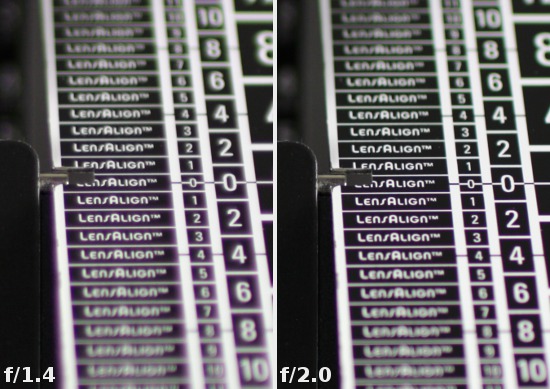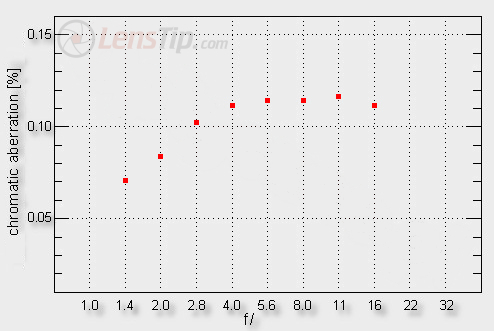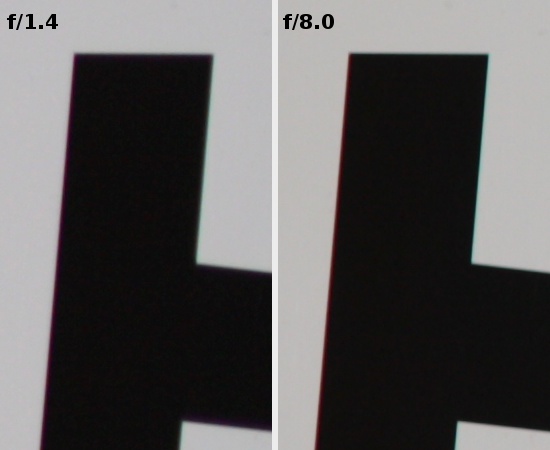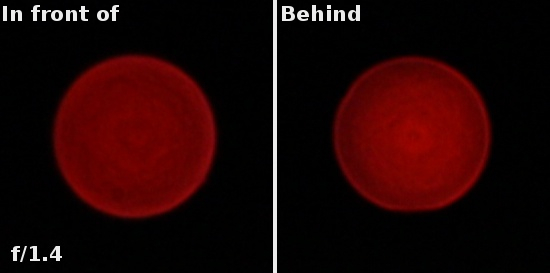Sigma A 30 mm f/1.4 DC HSM
5. Chromatic and spherical aberration
Chromatic aberration
The longitudinal chromatic aberration correction, or rather lack thereof, shows clearly that there are no low dispersion elements in the optical construction of the new Sigma. That aberration is very visible by f/1.4 and f/2.0 and only after stopping down the lens to f/2.8 it becomes not especially bothersome.
 |
Please Support UsIf you enjoy our reviews and articles, and you want us to continue our work please, support our website by donating through PayPal. The funds are going to be used for paying our editorial team, renting servers, and equipping our testing studio; only that way we will be able to continue providing you interesting content for free. |
- - - - - - - - - - - - - - - - - - - - - - - - - - - - - - - - - - - - - - - - - - - - - - - -
Fortunately, compared to the predecessor, the lateral chromatic aberration performance improved significantly. The old Sigma showed a high level of that aberration regardless of the aperture. The new model corrects that aberration well near the maximum relative aperture; unfortunately it increases with the stopping down (being one of the reasons why the MTFs on the edge of the frame are weaker) although it never reaches high levels.

It’s worth noticing here that in this category the new Sigma is distinctly better than the Nikkor AF-S DX 35 mm f/1.8G, which showed results ranging from 0.13% to 0.17% on stopping down.
 |
Spherical aberration
The first photo in this chapter shows clearly that the tested Sigma doesn’t have any „focus shift” problems. It means that the spherical aberration level cannot be high. Still it is not corrected in a perfect way either – the photos below show it very clearly. The circle we got behind the focus is noticeably lighter near its centre than the analogous circle before the focus plane.







